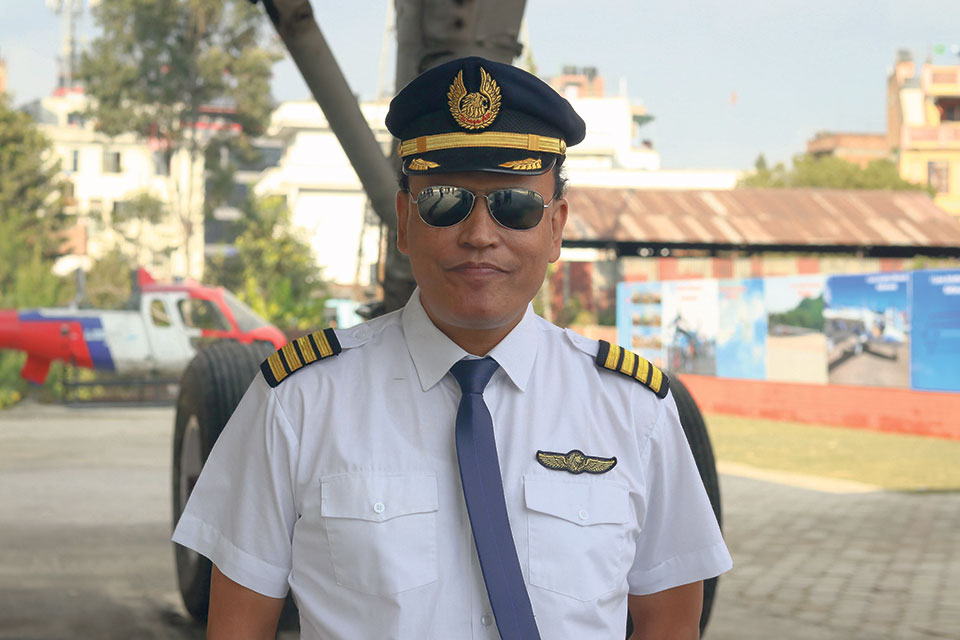Cham: The Dance Meditation (With Video)
5 years ago

5 years ago

5 years ago

5 years ago

5 years ago

5 years ago

Having graduated from Jawaharlal University and trained from National Defense Academy in Pune and Indian Military Academy, Bed Upreti is an experienced pilot as well as the CEO of Aircraft Museum, Sinamangal. His aviation journey began from a scholarship that he received while serving as a second lieutenant. He then completed the Pilots training from Indian Air Force. In 1992, Bed received the Commercial Pilot License from Federal Aviation Administration (FAA), USA. He then flew for Nepal Army for 12 years and worked for Necon air for eight years until 2004. He further worked for Kingfisher Airlines from 2004 to 2012. An author of over a dozen books, including ‘Everest From The Air’, ‘360 Degree Everest From A Pilot’s Eye View’, Bed is currently an instructor and examiner pilot with Wings Abadi (Lion Air) in Indonesia.
In an interview with My City’s Sonam Lama, Bed talked about his experiences and setbacks in the field of aviation.
How did the ambition of becoming a pilot arise ?
During the initial phase of my career, I aimed to be an engineer. After I completed my Intermediate in Science (Isc), I aspired to get enrolled in one of the finest engineering colleges through scholarship. But, no engineering colleges were providing any sort of scholarship and that turned my way toward joining Nepal Army as a second lieutenant.
Within a few years of undergoing training in the Nepal Army, I was selected for a pilot’s course under the scholarship provided by Nepal Army, which shaped my further journey in the field of aviation. As part of the training, I flew the aircraft in 1986 as a trainee pilot for the first time and that cultivated my first realization to fly more aircrafts in the future.
In your view, what are the setbacks in the Nepali aviation field?
Be it anywhere, flying is an adventurous yet challenging job and there are many factors as well as technical devices that help ensure safety onboard. In spite of the fact that there are many well trained pilots here, the safety onboard is more so challenged because of the high terrains and unpredictable weather.
In Nepal, we don’t have a radar system and Instrument Landing system (ILS) which enables aircraft to land if the pilots are unable to establish visual contact with the runway with the help of transmitted radio signals. Moreover, the short runways and feeble navigation system are the major hindrances affecting aviation in Nepal.
What are the factors to be considered to ensure flight safety in Nepal?
The first and foremost thing is to allocate ample budget and investment for the field. Since it would take time to tackle the geographical barrier any soon, a maximum effort should be put on the areas where we have our control over. The airport runway should have a proper maintenance from time to time and the airport terminal should be widened along with a spacious parking area.
The authoritative bodies should run proper planning, adopting need able strategies, boost investment and implement rules and regulation in order to bolster the sector of aviation.
You have been flying for Lion Air in Indonesia, but do you have any plans to fly for Nepali airlines?
I have previously worked as a pilot for Necon Air for eight years in Nepal. It was due to the sudden collapse that made me collaborate with other airlines. I am currently dedicated here to working for Aviation Museum that would help people gain newer experience here. Talking about the work, I think it is very important that your profession provide you with the optimum safety and prosperity so, if all the factors seem to work in cohesion I would be more than delighted to work here.
Any word of advice to our readers?
Aviation is definitely risky but not to an extent where you cannot even dream of becoming a successful pilot. Every work has its own pitch and fall which should be acknowledged well. It will surely cost you a fortune to meet the financial expenses of pilot courses, but those obstacles are not big if you are whole heartedly willing to do something remarkable in the field.
Leave A Comment